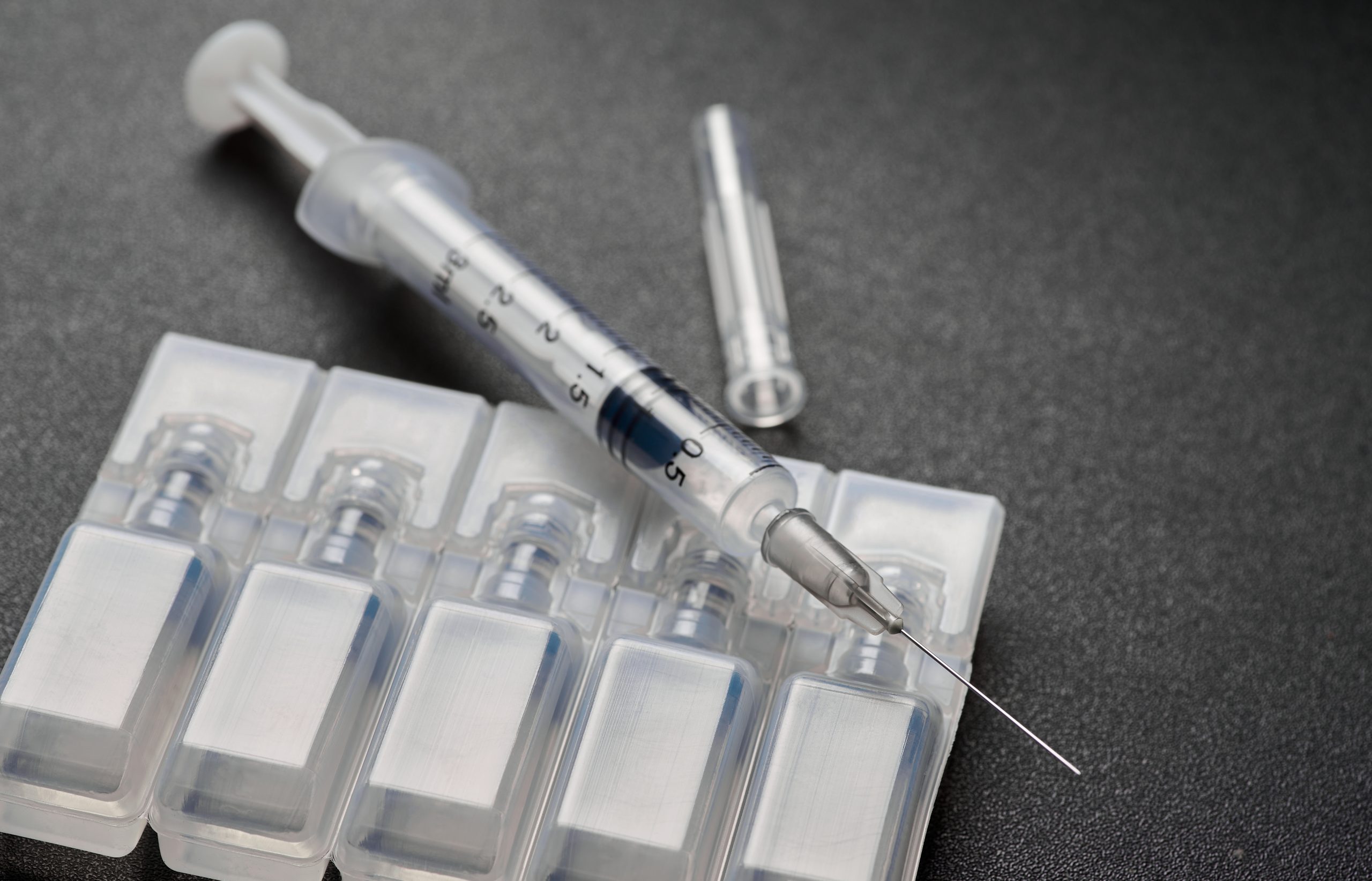According to Maheu et al. (2016), intra-articular hyaluronic acid (HA) injections offer significant pain relief and functional improvement in knee osteoarthritis. The study highlights HA’s long-term benefits, including potential delays in total knee replacement surgery, affirming its efficacy and safety in clinical practice.
Hyaluronic acid (HA) injections have shown effectiveness in the medical and aesthetic fields. Specifically, intra-articular HA injections have proven to treat patients with mild to moderate knee osteoarthritis (OA). Products like Orthovisc and Hyalgan can deliver symptomatic relief and improve patients’ quality of life.
In this article, we will explore the differences between Orthovisc and Hyalgan, as well as their mechanisms of action, safety indications, and clinical efficacy.
Key Takeaways
- When these first-line treatments do not affect, medical professionals may recommend intra-articular hyaluronic acid (HA) injections to temporarily relieve pain in knee osteoarthritis patients.
- When these solutions surround the joints, they work as lubricants and shock absorbers, providing pain-free movement and improved function and mobility.
- The therapy requires direct administration of the hyaluronic acid (HA) injection into the affected knee joint to deliver symptomatic relief.
- Specific dosing regimens for Orthovisc and Hyalgan are designed to provide optimal outcomes and relief to knee osteoarthritis (OA) patients.
- Most intra-articular hyaluronic acid (HA) injections, like Orthovisc and Hyalgan, are generally well-tolerated by most individuals but can cause temporary side effects after treatment.
About: Medica Depot is your trusted all-in-one supplier, offering a range of high-quality medical injectables and supplies. If you’re looking to buy Orthovisc online, you can do so on Medica Depot quickly and easily. We offer a worry-free experience in searching for the best and most popular products on the market. Whether for health professionals, plastic surgeons, dermatologists, licensed estheticians, or other specialists, we can offer genuine, brand-name products you may need. With Medica Depot, we prioritize serving you better to improve the patient’s quality of life.
Introduction to Orthovisc and Hyalgan

Osteoarthritis (OA) is a degenerative joint disease and the most common form of chronic arthritis. It can affect joints such as the hands, spine, hips, or knees. Patients suffering from OA may experience symptoms that can worsen over time.
- Joint Pain
- Joint Swelling
- Joint Stiffness
- Pain When Doing Daily Activities like Climbing Stairs, Sitting, Walking, etc.
Many individuals globally have experienced knee OA due to factors such as aging and being overweight. While most severe knee OA conditions require total knee replacement surgery, early to moderate knee OA conditions may utilize simple analgesics, physical therapy, etc.
However, when these first-line treatments do not affect, medical professionals may recommend intra-articular hyaluronic acid (HA) injections to temporarily relieve pain in patients with knee OA. Orthovisc and Hyalgan require multiple injections to complete a cycle and receive lasting relief for six months or so.
Comparing Orthovisc vs Durolane or Orthovisc vs Hyalgan is crucial for medical professionals to determine the most suitable treatment for each patient. Understanding the differences between these treatments is vital.
Mechanism of Action
Orthovisc and Hyalgan injection solutions have similar linear structures. Although their molecular weight and formulation may differ, these injections have identical mechanisms of action.
These viscosupplements rely on the potency of high-molecular-weight hyaluronic acid (HA). This treatment approach is particularly relevant to knee osteoarthritis (OA) conditions for which other medications are ineffective.
Orthovisc and Hyalgan supplement the lost HA in the synovial fluid when injected into the knee joint. When these solutions surround the joints, they work as lubricants and shock absorbers, providing pain-free movement and improved function and mobility. They reduce friction, leading to decreased pain and inflammation while improving joint cushioning.
This knee OA therapy aims to restore the synovial fluid to its original HA property characteristics like viscoelasticity, providing long-lasting pain relief for up to six months.
Indications and Clinical Efficacy

Orthovisc and Hyalgan have received the US Food and Drug Administration’s approval to treat knee osteoarthritis (OA) patients. The therapy requires direct administration of the hyaluronic acid (HA) injection into the affected knee joint to deliver symptomatic relief.
These brand-name HA injections have similar indications for their treatment. Medical professionals may recommend Orthovisc or Hyalgan when patients fail to respond to conservative therapies, simple analgesics, or first-line knee OA treatments.
Peck et al. (2021) revealed in their comprehensive review that viscosupplementation, like Orthovisc and Hyalgan, is safe and effective over placebo and more effective than non-steroidal anti-inflammatory drugs (NSAIDs) and corticosteroids in reducing pain and improving joint function and mobility.
Furthermore, another study demonstrated that intra-articular hyaluronic acid injections provide moderate and real benefits for patients with knee OA. While individual HA injection preparations may vary, medical professionals can help individuals find the best knee OA treatment.
Dosing Regimens
Specific dosing regimens for Orthovisc and Hyalgan are designed to provide optimal outcomes and relief to knee osteoarthritis (OA) patients. They involve direct administration of intra-articular injection into the affected knee joint.
- Orthovisc Dosage Guidelines: Orthovisc is typically administered as a 2 mL injection into the knee joint once weekly for three weeks. Some individuals may benefit from Orthivisc knee injections for four weeks.
- Hyalgan Dosage Guidelines: Hyalgan also requires a 2 mL injection into the affected knee joint once weekly for three to five weeks.
Orthovisc and Hyalgan have similar administration, requiring injections once weekly for three to five weeks. Medical professionals can consider several factors influencing patients’ dosing decisions.
- Patient Treatment Response
- Severity of Symptoms
- Presence of Adverse Events
- Patient’s Knee OA Condition
Safety Profiles

Most intra-articular hyaluronic acid (HA) injections, like Orthovisc and Hyalgan, are generally well-tolerated by most individuals. However, like all other medications, they can cause temporary side effects after treatment.
Patients can expect Orthovisc side effects ranging from mild to moderate and may subside over time. Most of the time, these are harmless, but when these persist, immediately contact your trusted healthcare provider.
- Pain
- Swelling
- Heat
- Rash
- Itching
- Bruising
- Redness
Similarly, Hyalgan-treated patients can experience several side effects that are expected not to last long. These common side effects may occur at the injection site.
- Pain
- Swelling
- Heat
- Redness of the joint
- Rash
- Itching
- Bruising
It’s worth noting that medical professionals can help manage the symptoms of these viscosupplements. When considering Orthovisc and Hyalgan, patient safety and tolerability are crucial. These viscosupplements have contraindications that medical professionals must remember to avoid further complications.
- Do not administer to patients with known hypersensitivity to hyaluronate preparations.
- Do not administer to patients with infections or skin diseases in the area of the injection site or joint.
Additionally, if Orthovisc patients know they have allergies to avian or avian-derived products, they should avoid them because they have sourced their hyaluronan from rooster combs.
Conclusion
Orthovisc and Hyalgan are both significant therapies in the medical field. Each has a unique formulation, effective mechanism of action, indications, and clinical efficacy. Despite their differences in dosing regimens and safety profiles, they share a common goal of providing symptomatic relief to patients.
The choice between Orthovisc and Hyalgan ultimately depends on the patient’s needs, responses, knee osteoarthritis (OA) condition, and overall health. Both have proven their safety and effectiveness, and their differences and similarities offer more comprehensive and personalized patient care.
FAQs
1. What are Orthovisc and Hyalgan, and how do they work?
Orthovisc and Hyalgan are two intra-articular hyaluronic acid (HA) injections used to treat knee osteoarthritis (OA). They supplement the lost HA in the synovial fluid surrounding the knee joint, functioning as lubricants and shock absorbers to provide pain-free movement and improved function and mobility.
2. What are the dosing regimens for Orthovisc and Hyalgan, and how long do their effects last?
Orthovisc and Hyalgan have similar administration, requiring injections once weekly for three to five weeks. Orthovisc is typically administered as a 2 mL injection into the knee joint once weekly for three weeks. Hyalgan also requires a 2 mL injection into the affected knee joint once weekly for three to five weeks. The effects of both treatments can last for up to six months.
3. What are the indications and clinical efficacy of Orthovisc and Hyalgan?
The US Food and Drug Administration has approved Orthovisc and Hyalgan to treat knee osteoarthritis (OA) patients who fail to respond to conservative therapies, simple analgesics, or first-line treatments. Both treatments offer significant pain relief and functional improvement in knee OA.
4. What are the safety profiles of Orthovisc and Hyalgan, and what are their potential side effects?
Orthovisc and Hyalgan are generally well-tolerated by most individuals. However, temporary side effects like pain, swelling, heat, and rash may occur after treatment. These side effects are typically mild to moderate and may subside over time. If they persist, it is essential to contact a trusted healthcare provider.
References
- Maheu, E., Rannou, F., & Reginster, J. Y. (2016). Efficacy and safety of hyaluronic acid in the management of osteoarthritis: Evidence from real-life setting trials and surveys. Seminars in arthritis and rheumatism, 45(4 Suppl), S28–S33. https://doi.org/10.1016/j.semarthrit.2015.11.008
- Richette, P., Chevalier, X., Ea, H. K., Eymard, F., Henrotin, Y., Ornetti, P., Sellam, J., Cucherat, M., & Marty, M. (2015). Hyaluronan for knee osteoarthritis: an updated meta-analysis of trials with low risk of bias. RMD Open, 1(1), e000071. https://doi.org/10.1136/rmdopen-2015-000071









